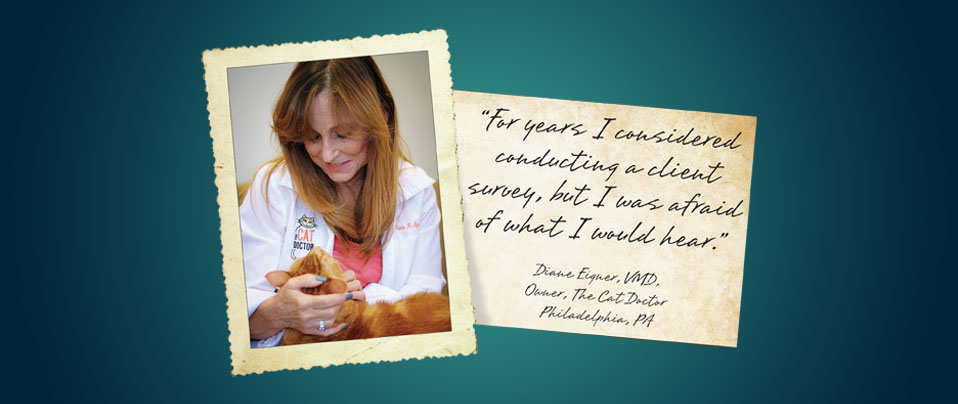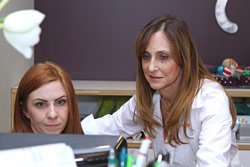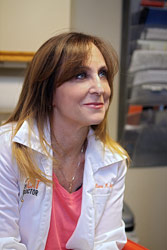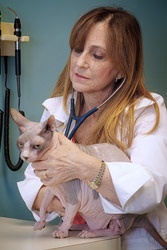The Opportunity Survey

Helping Good Practices Become Even Better
The Cat Doctor, an all-feline AAHA practice in Philadelphia, utilized The Opportunity online survey tool to strengthen and improve an already successful practice that has been serving cat owners since 1983. “Our practice income was up almost 10% last year despite a struggling economy,” says practice owner Diane Eigner, VMD, past-president of the AAFP. “I believe that the way our clients embraced the survey experience and the way our healthcare team responded to the client feedback contributed to that growth. Our practice used the survey to significantly improve two specific components of preventive healthcare, pain assessment and assessment of the patient’s behavior.” Dr. Eigner also feels that the internal dialog among the healthcare team in response to the client feedback strengthened the staff’s already strong commitment to the practice culture.

The Opportunity is the exclusive online survey tool developed by Partners for Healthy Pets to reveal gaps between how a veterinary practice perceives specific types of communication and how the practice’s clients perceive the same communication. The anonymous responses provided by survey participants yield feedback on various aspects of the client and patient experience. These include five aspects of the examination itself, the benefits and value of the overall visit (including payment option preferences), and eleven specific components of preventive healthcare assessment. All 18 staff members and The Cat Doctor’s entire client base were invited to take The Opportunity survey.
Broad survey participation
The entire healthcare team of veterinarians, technicians, nursing staff, and administrative staff completed the survey. Dr. Eigner had a choice of inviting clients to take the survey on a selective or random basis but instead chose to ask all clients to participate. “It was a leap of faith,” she says. “For years I had considered conducting a client survey, but to be honest I was a bit afraid of what I would hear.” Her fears were unfounded. “I was amazed that nearly all our clients responded,” Dr. Eigner notes. “That was good feedback in itself because it reflected a high degree of loyalty and client engagement in our practice. Frankly, it was uplifting to me.”
The Cat Doctor healthcare team and the practice’s clients took the survey on two occasions six months apart. This arrangement allowed Dr. Eigner and her staff to see if any improvement occurred in client perceptions of healthcare delivery since the first survey. Practices that take advantage of The Opportunity can use the survey tool at no charge as many times as they wish. Some practices choose to use The Opportunity survey on a continuous basis. In such cases, clients are given an invitation to participate in the survey every time their pets are examined at the practice. This approach allows the practice management to see survey results as they evolve.
The high volume of client feedback provided Dr. Eigner with a robust survey sample, one that revealed several gaps between what the healthcare team was trying to communicate and what their clients were hearing. “We’ve always felt pretty confident that as a team we consistently communicate the key messages about feline wellness,” Dr. Eigner says. “However, we found out from the survey results that in some cases our clients did not rate their perceptions of those messages as highly as the staff did.”
Identifying communication gaps
A key communication gap revealed by the survey was the response to the question, During a feline preventive healthcare visit to your practice, is a behavioral assessment performed at every exam, regardless of the pet’s age. In the initial survey, clients concurred slightly less than half the time. In contrast, the healthcare team answered in the affirmative 78% of the time. This discrepancy caught Dr. Eigner’s attention because of the importance of providing a home environment that supports the cat’s unique behavioral characteristics.
“A cat’s behavior is very species-specific and much different from a dog’s,” Dr. Eigner explains. “For example, cats like be able to hide and to have access to elevated perches because it gives them a sense of security.” She adds that cats were not meant to live indoors continuously, but need access to a safe outdoor environment. Pet owners should play with kittens in a different, less aggressive manner than the way they play with older cats. Cats in a multi-cat household also need equal access to environmental resources (food, water, resting and sleeping areas), and special accommodations should be made for older cats so they have easy access to their eating areas and litterboxes. Stalking and predatory behavior, marking and posturing, and a need for predictable interaction with humans are other distinctly feline traits.
“Cat owners need to understand these feline behavioral characteristics and needs,” Dr. Eigner says, “otherwise the cat’s quality of life and relationship with its owner will suffer. An informed cat owner will know how to properly adapt the home environment and how to best interact with their cats. We found out from client survey responses that we could do a better job of explaining and discussing this very important aspect of cat ownership.”
The survey revealed a similar gap in the perception of whether the healthcare team makes a pain assessment at every exam. The staff response indicated that a pain assessment was made nearly 80% of the time, but only a minority of clients indicated that a pain assessment was given.
“Acute and especially chronic pain are associated with stress, slower healing and response to therapy, and lower quality of pet-owner interaction,” Dr. Eigner points out. “For these reasons and to provide truly compassionate care of our feline patients, our practice emphasizes the diagnosis and management of pain.” The clinical staff routinely makes a pain assessment during the exam by manipulating the cat’s joints, observing its movement, and asking the client questions such as the cat’s level of activity.
“This approach is sometimes subtle and wasn’t being perceived by our clients as a pain assessment,” Dr. Eigner explains. “That was a red flag that we needed to improve how we communicate this key aspect of preventive healthcare.
How the practice responded

As an AAFP-certified Cat Friendly Practice, The Cat Doctor healthcare team had a strong pre-existing commitment to performing a behavior assessment and pain assessment for each patient at every visit. “Despite our strong commitment to these aspects of feline health, the survey made us realize we had to focus even more strongly and ‘pick up our game’ in these areas,” Dr. Eigner comments. “We discussed this and how we would improve during our regular staff meetings.”
Prior to having her healthcare team take The Opportunity survey, Dr. Eigner discussed the process with the entire practice staff. Everyone understood the purpose of the survey and how it would be administered, and all agreed to provide their anonymous feedback. Once the initial client survey responses were received, there was more staff discussion to share ideas for improvement and identify specific changes that would elevate the behavioral and pain assessment components of the regular healthcare visit. The same process was repeated for other areas designated for improvement.
“The give-and-take among the staff was fun, a staff-building exercise,” Dr. Eigner notes. “We have an implicit practice culture at The Cat Doctor – to empower staff so that everyone contributes and is listened to, and to embrace change, especially new technology, to improve and deliver superior healthcare. The interaction among the staff when we critiqued the survey and discussed how we would respond was completely supportive of our practice culture. While the changes prompted by the survey were helpful, so was the internal process of implementing and responding to the survey itself.”
When the follow-up survey was completed six months later, results indicated that the gap between staff and client perceptions had closed significantly for the behavior and pain assessment components. For most of the other services that were evaluated in the survey, the gaps in staff and client responses were relatively narrow. For example, virtually all clients said they were “extremely satisfied” or “very satisfied” with their cat’s most recent preventive healthcare visit. In the case of several healthcare services, clients even rated The Cat Doctor staff higher than the healthcare team itself did. Clients also rated The Cat Doctor practice more credible than the Internet. This was very encouraging because surveys have shown that most dog and cat owners consider the Internet to be their first option for pet healthcare information. These positive responses were useful information to the healthcare team because it let them know that most aspects of the client experience were being handled at a high service level.
“In those areas where the communication gap was small, we made some incremental improvements from one survey to the next,” Dr. Eigner says. “In a couple of areas such as behavior and pain assessment we achieved even greater performance gains by making a focused effort at process improvement. By extending our clients the courtesy of asking their opinion, there is no question that we made a successful practice even better and stronger.”
Delivering value
There are various ways for veterinarians to deliver invitations to their clients to participate in The Opportunity survey. These include extending an invitation at the practice after a healthcare visit, or by social or Internet media, telephone, or postal card. Some practices have a computer station at the practice where clients can take the survey on site. Dr. Eigner chose to send the invitation by e-mail using her Vetstreet portal. This allowed her to reach the entire client base with negligible expenditure of time and effort (“a piece of cake,” in her words). Her clients then completed the survey at home at a time that was convenient for them. Survey responses were automatically tabulated by the Partners for Healthy Pets website, providing a convenient, easily read online report to the practice. The survey tool is completely automated and therefore truly anonymous, with results automatically calculated in real time. As a result, survey results are updated every time a client or healthcare team member submits a completed survey.
Dr. Eigner is an early adapter to new technology. “I get excited when I see a way to improve my practice, especially when it’s technology based, easy and free!” she says. The Opportunity survey tool met all of those criteria. By using the survey and closing the communication gaps that it revealed, her staff improved the delivery of healthcare by their already successful feline practice. Based on her firsthand experience, Dr. Eigner considers the survey and the other online tools to be a tremendous value for veterinary practitioners.

Partners for Healthy Pets provides tools to help veterinary practice teams improve communication, enhance client relationships and ultimately to deliver the highest level of preventive care. “What Partners for Healthy Pets has done would be very costly if a veterinary practice were to retain a consultant to conduct the same survey, provide the same resources, and make the same recommendations,” Dr. Eigner notes. “The online Resources Toolbox, including the survey tool, is very accessible, effective, and totally free. It’s a terrific way to build on your success by strengthening the relationship among all the stakeholders in a veterinary practice – staff, clients, and patients.”
Partners for Healthy Pets is dedicated to ensuring that pets received the preventive healthcare they deserve through regular visits to a veterinarian and is committed to working with you to enhance the health of your patients and your practice. Learn more about Partners for Healthy Pets and explore the Resources Toolbox at www.partnersforhealthypets.org
Tools of Interest
The following tools helped this hospital:
- The Opportunity
Read what your colleagues are saying about their experiences using specific Partners for Healthy Pets tools.
Success Stories are testimonial case studies of the benefits realized by patients and practices as a result of utilizing the Resources Toolbox!

